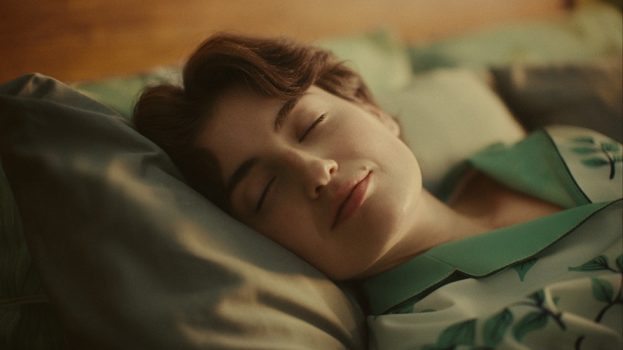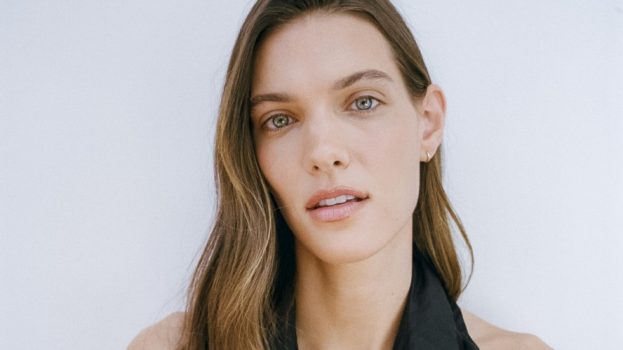Cosmetic marketing used to be about signing deals with supermodels and plotting the most alluring packaging, colors and names for your product lines. Now it’s becoming rocket science.
In recent years, the line between cosmetic and pharmaceutical products has become increasingly blurred. An enhanced interest in health issues and a faster-paced society means that consumers are looking for more than a purely cosmetic product. Cosmetic companies have responded to this shift by marketing more and more multi-featured goods, dubbed ‘cosmeceuticals,’ which combine cosmetics with vitamins, herbs or pharmaceuticals.
For example, skin care and cosmetics group Awake’s Hydro-Touch foundation contains gingko bilboa to improve skin tone, vitamin E to act as an antioxidant and ivy to help tighten pores. Elizabeth Arden’s Lip Lip Hooray! lipstick contains sun block and a sulphur neutralizer that combats bad breath, while spiritual health remedy company Tony & Tina’s Mood Balance lipstick contains St John’s wort to help combat the blues.
Olay has been a major player in the anti-aging market for some time, and recently launched its Total Effects range, containing vitamin complex VitaNiacin, which Olay claims can fight the seven signs of aging.
Colgate Palmolive’s Softsoap is currently being advertised with an emphasis on the fact that it contains vitamins A, C and E, designed to combat skin damage caused by air pollution and UV rays.
To compete in the increasingly crowded and complex sector, on top of touting all the latest sci-fi-sounding beautifying agents piled into their formulations, companies are deploying additional tactics to win further market share. Over-scheduled women are being offered all-in-one, time-saving concoctions, wrinkle cream is being pitched to those who don’t yet need it with ‘preemptive strike’ messaging, and the ‘clinical’ benefits of the additives are being spotlighted to open doors to new markets – consumers who might not have flocked to purely aesthetic products.
Early next year, anti-aging brand NeoStrata will be launching a new product, Multi-activ cleansing milk, aimed at busy working women who don’t have time for a complicated skin-care routine. The product is marketed as having time-saving four-in-one capabilities, as it allegedly takes care of cleansing, toning, make-up-removal and skin hydration. The product, which is targeting time-conscious women of all ages, comes complete with mango butter for its moisturizing qualities and avocado butter to provide vitamins A, D and E.
Marketers are also targeting women with the message that you don’t have to wait until you get your first wrinkle before you start to care for your skin.
Ingredients that fight the effects of aging such as alpha hydroxy acids (AHA’s), which have become commonplace on the cosmetic counters, are now being marketed towards younger and younger women. ‘Women are becoming more aware that they can start fighting the aging process from a much younger age,’ says Stefani Valkonen, external relations manager for health and beauty care at the Toronto branch of Procter & Gamble, the company which owns the anti-aging brand, Oil of Olay.
St. Laurent, Quebec-based Canderm Pharma, distributor of NeoStrata, is launching a TV ad campaign this month for NeoStrata’s new Wrinkle Defense cosmeceutical line, containing the ingredient micro-collagen. The ads, which are targeting younger women with the message that prevention is better than cure, feature Quebec actress Chantal Fontaine, who for some time has been recognized as the face of NeoStrata. ‘There are a lot of women in their early to mid-30s who are starting to see fine lines,’ says Annie Turenne, marketing coordinator. ‘The micro-collagen in this product helps to prevent those lines from becoming wrinkles.’
Canderm has specialized in the cosmeceutical industry since 1991, and claims to have the first AHA line distributed in Canada. Sales of NeoStrata products have grown significantly in the last two years, a trend which Turenne attributes to an increased awareness of the sector. ‘Previously we relied on word of mouth, but there is so much advertising around anti-aging products now. For people who can’t afford or don’t want surgery, these products are a great way of reducing wrinkles and fine lines.’
A recent study by Foster City, Calif.-based research group Front Line Strategic Consulting projects the anti-aging skin care cosmeceutical market to grow at a compound annual rate of 15% to reach over US$2.1 billion by 2005. Anti-aging products constitute almost 34% of the cosmeceutical market today, versus 15% in 1997.
According to Rina Shah, lead author of the report, the increase in the number of cosmeceuticals on the market can be partly attributed to the number of suppliers strenuously investing money into scientific research in recent years, such as Pfizer and Estée Lauder. Scientific ‘health’ facts have become a focus of advertisements around many products.
‘It’s a very popular way of advertising now,’ agrees Mark Brooks, director of Port Washington, N.Y.-based NPD BeautyTrends. ‘A lot of companies are launching their products with breakthrough technology and backing from the pharmaceutical and health industries.’
Neutrogena advertises its products as ‘Dermatologist recommended,’ with one recent ad using the tagline ‘The doctor is now in.’
‘These are technically aesthetic products, but this technique positions the product to appeal to someone who is interested in health benefits, so it opens up a whole new market,’ says Shah. She comments that many cosmetics companies now distribute their products through doctors and estheticians to give the product perceived clinical credibility.
Another reason for the upturn in cosmeceutical sales is the desire for speed and simplicity. ‘When we were doing consumer interviews we found that what people desire is products which make them look beautiful and make them feel better internally at the same time,’ says Shah. ‘They don’t want to have to use a different product for each need.’
And, she says, ‘with the growing interest in therapeutic techniques, manufacturers have a lot of unique opportunities to market cosmetic products.’
A global report published recently by New York-based Euro RSCG Worldwide found that it is becoming increasingly common for products to be packaged with the ability to take care of more than one need.
‘People want to be sure that health and beauty benefits can both be obtained from the same product,’ says Marian Salzman, global director of strategic planning at Euro RSCG, and author of the report. ‘More significant is the growing recognition in this competitive marketplace that every product should do more than it promises to do. People expect more. It’s not enough for a product to just perform one task any more.’
Kristin Armstrong, brand director at Montreal-based L’Oreal Canada, feels that the trend towards cosmeceuticals is evident within certain product segments. ‘With relation to the Helena Rubinstein brand, there is a definite increase in multi-functional products,’ she says. ‘With all the innovations in science and technology, it’s a major factor in the body care segment. Women are very aware of the whole notion of pampering and the benefits of bringing different products together.’ Helena Rubinstein has recently launched a new anti-wrinkle cream, Collagenist, which claims to give an ‘injection-free collagen effect.’
Maureen Atkinson, retail analyst with Toronto based J.C. Williams Group, believes that the growth in the cosmeceutical industry can be largely attributed to the baby boomer demographic. ‘As they get older they suddenly realize that they need to start taking care of themselves.
‘There is also a growing concern that we are not really sure what’s going into our food and our drugs, and going back to more natural, health-oriented products is one way of combating that fear,’ she says.
Beauty pays off
Despite the spiraling costs of being wrinkle-free, moisturized by a specific product for each skin region, and generally maintaining a glowing visage and shiny pelt, the market for high-cost luxury cosmetic products continues to thrive.
U.S. sales of luxury skin care products (those costing over US$50) rose 27% between 1997 and 2000, according to a report published recently by Port Washington, N.Y.-based NPD BeautyTrends. Between January and June 2001, prestige beauty products in U.S. department stores increased by 6%. Sales of cosmetic products in Canada increased by more than $17 million between 1993 and 1997, according to Statistics Canada.
Despite the economic reserve post Sept. 11, luxury products within L’Oreal’s Helena Rubinstein brand are still on track, according to brand director, Kirsten Armstrong. ‘There is a segment of women for whom buying cosmetics is not really about pampering, but more about a day-to-day lifestyle necessity, so no matter what the economy does, they will continue to buy the products that they feel they need,’ she says.
Marian Salzman, global director of strategic planning at Euro RSCG Worldwide, adds: ‘In times of economic downturn, it’s quite common for people to indulge themselves in something special that’s also affordable, so the cosmetic industry tends to do quite well. Instead of buying a designer handbag, for example, women will treat themselves to a luxury lipstick.’






















